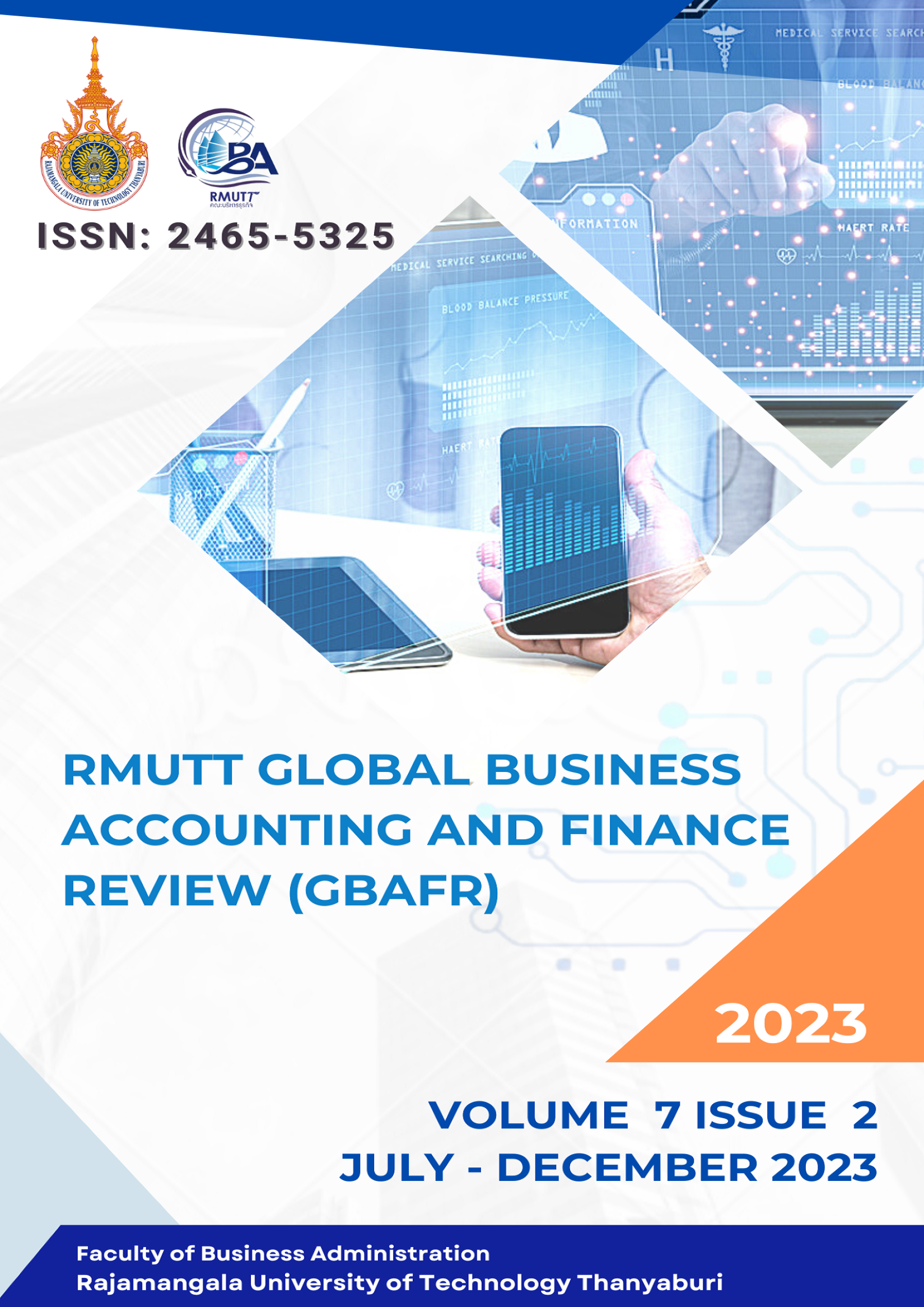RISK-RELATED FACTOR AND FINANCIAL ATTITUDE ON RETIREMENT SAVING BEHAVIOR
DOI:
https://doi.org/10.60101/gbafr.2023.268068Keywords:
Risk-related factor, Retirement risk, Financial attitude, retirement saving behaviorAbstract
Purpose – This research aims to analyze the influence of retirement risk-related factors and financial attitudes on saving behavior for retirement.
Methodology – The research was organized using 400 Thai employees in various occupations. This research analysis method was occupied by operating on structural equation modeling (SEM) Amos.
Results – The finding pointed out that risk-related factors have a positive effect on retirement saving behavior (0.441), and financial attitude has a positive influence on retirement saving behavior (0.750).
Implications – Workers should rely on risk-related factors and financial attitude factors to be successful in retirement savings. Also, this research helps people to realize and understand more about the relationship between risk-related factors, financial attitude, and retirement saving behavior. This empirical study makes a contribution in the form of a comprehensive model to explain risk-related factors and financial attitudes toward retirement saving behavior.
Originality/Value – This analytical framework reveals the relationship of financial attitudes and risk-related factors on retirement saving behavior. This article helps to investigate the effective factor on the retirement saving behavior for Thai retirement perspective.
References
Barrieu, P., Bensusan, H., El Karoui, N., Hillairet, C., Loisel, S., Ravanelli, C., & Salhi, Y. (2012). Understanding, modelling and managing longevity risk: key issues and main challenges. Scandinavian actuarial journal, 2012(3), 203-231.
Bekaert, G., & Wang, X. (2010). Inflation risk and the inflation risk premium. Economic Policy, 25(64), 755-806.
Carbonaro, G., Leanza, E., McCann, P., & Medda, F. (2018). Demographic decline, population aging, and modern financial approaches to urban policy. International Regional Science Review, 41(2), 210-232.
Cochran, W. G. (1977). Sampling Techniques: 3d Ed. Wiley.
Crawford, R., & O'Dea, C. (2020). Household portfolios and financial preparedness for retirement. Quantitative Economics, 11(2), 637-670.
Doran, B., Drew, M. E., & Walk, A. N. (2012). The retirement risk zone: A baseline study. JASSA, 3(1), 6-11.
Hooper, D., Coughlan, J., & Mullen, M. R. (2013). The servicescape as an antecedent to service quality and behavioral intentions. Journal of services marketing, 24(7), 271-280.
Kimiyagahlam, F., Safari, M., & Mansori, S. (2019). Influential behavioral factors on retirement planning behavior: The case of Malaysia. Journal of Financial Counseling and Planning, 30(2), 244-261.
Kiril, K. O. S. S. E. V. (2020). OECD/INFE 2020 international survey of adult financial literacy. https://www.oecd.org/financial/education/oecd-infe-2020-international-survey-of-adult-financial-literacy.pdf
Knekta, E., Runyon, C., & Eddy, S. (2019). One size doesn’t fit all: using factor analysis to gather validity evidence when using surveys in your research. CBE—Life Sciences Education, 18(1), rm1.
Laster, D., Vrdoljak, N., & Suri, A. (2016). Strategies for managing retirement risks. The Journal of Retirement, 4(1), 11-18.
Neukam, K. A., & Hershey, D. A. (2003). Financial inhibition, financial activation, and saving for retirement. Financial Services Review, 12(1), 19-37.
Pereira, A. G., & Afonso, L. E. (2020). Automatic enrollment and employer match: an experiment with the choice of pension plans. Revista de Gestão, 27(3), 281-299.
Rhee, N. (2013). The retirement savings crisis. Washington DC: National Institute on Retirement Security.
Sandbrook, W., & Ravi-Burslem, R. (2019). Communicating NEST Pensions for'New'DC Savers in the United Kingdom. Social Protection & Jobs, Discussion Paper.
Stawski, R. S., Hershey, D. A., & Jacobs-Lawson, J. M. (2007). Goal clarity and financial planning activities as determinants of retirement savings contributions. The International Journal of Aging and Human Development, 64(1), 13-32.
Topa, G., & Alcover, C. M. (2015). Psychosocial factors in retirement intentions and adjustment: a multi-sample study. Career Development International, 20(4), 384-408.
Zhou, Y., Wushouer, H., Vuillermin, D., Ni, B., Guan, X., & Shi, L. (2020). Medical insurance and healthcare utilization among the middle-aged and elderly in China: evidence from the China health and retirement longitudinal study 2011, 2013 and 2015. BMC Health Services Research, 20(1), 1-9.
Downloads
Published
How to Cite
Issue
Section
License
Copyright (c) 2023 Faculty of Business Administration, Rajamangala University of Technology Thanyaburi

This work is licensed under a Creative Commons Attribution-NonCommercial-NoDerivatives 4.0 International License.









